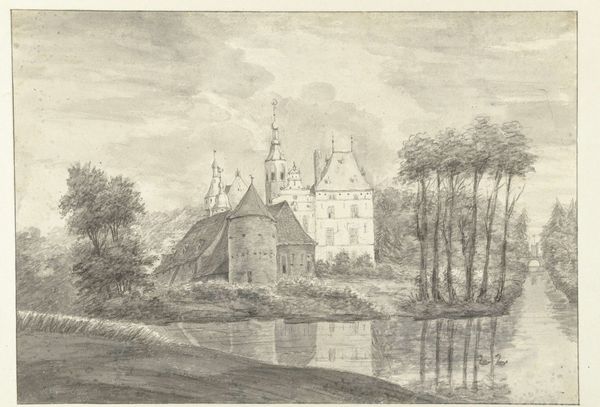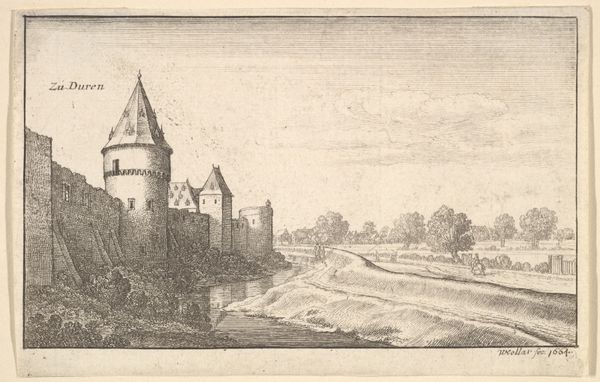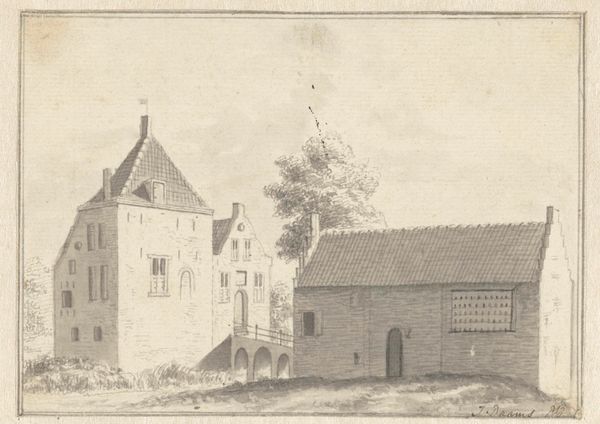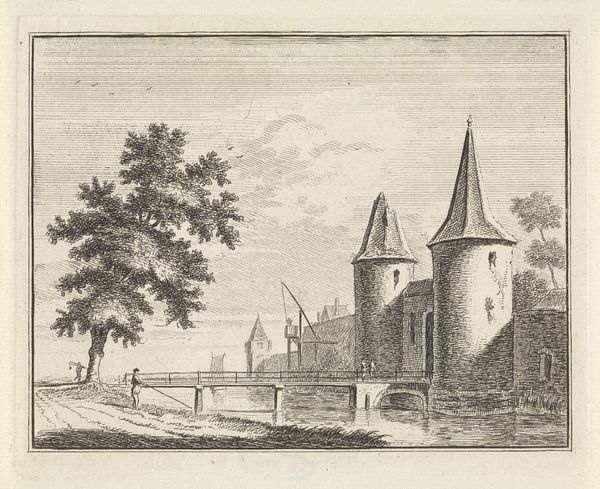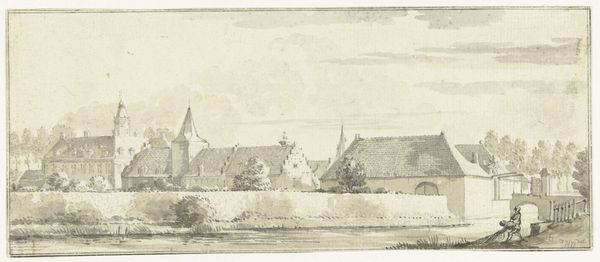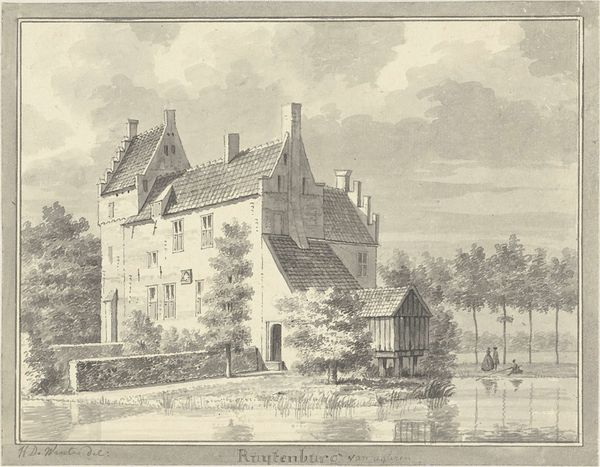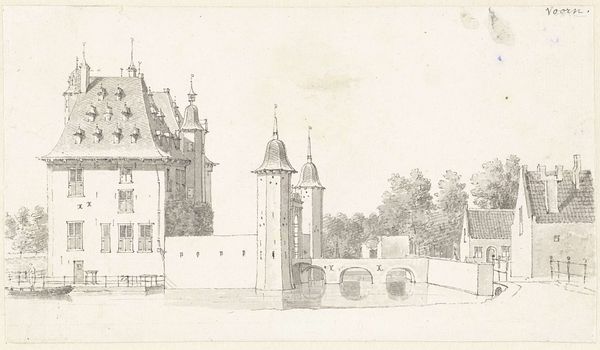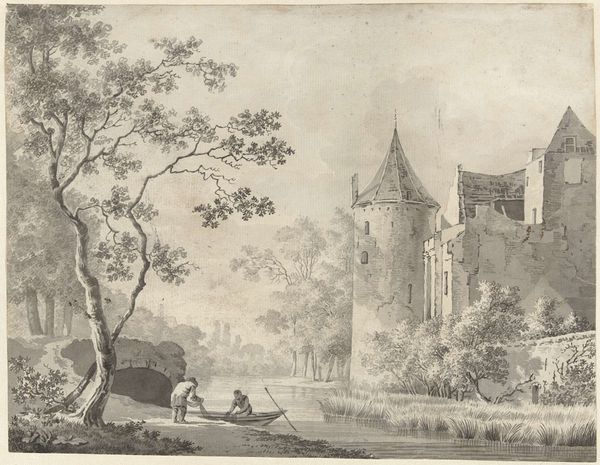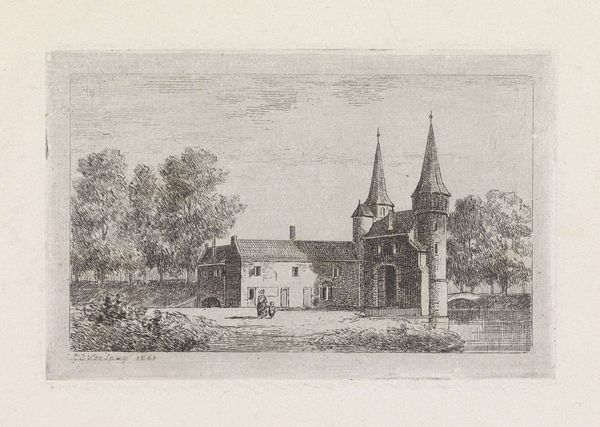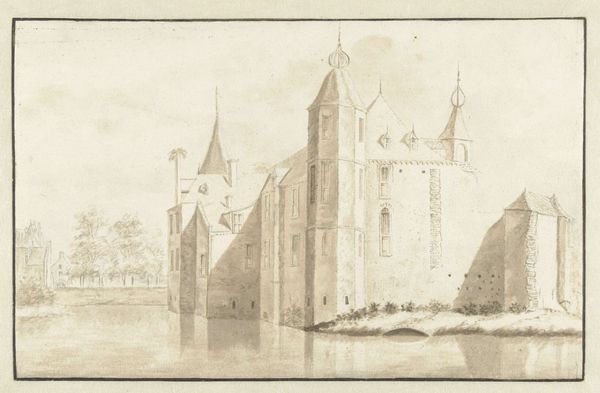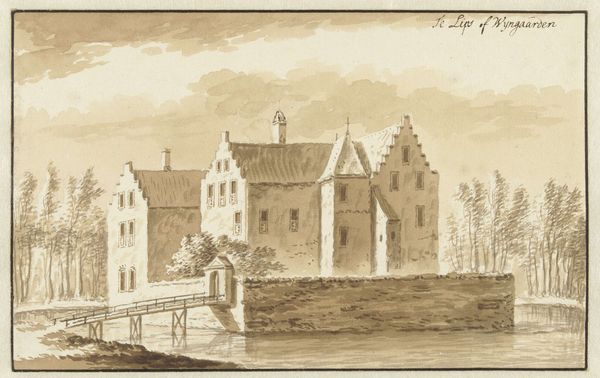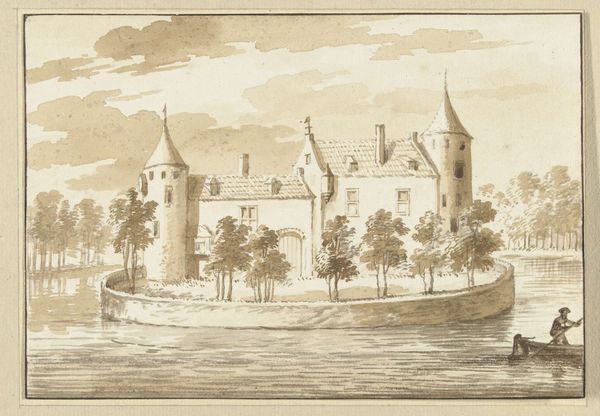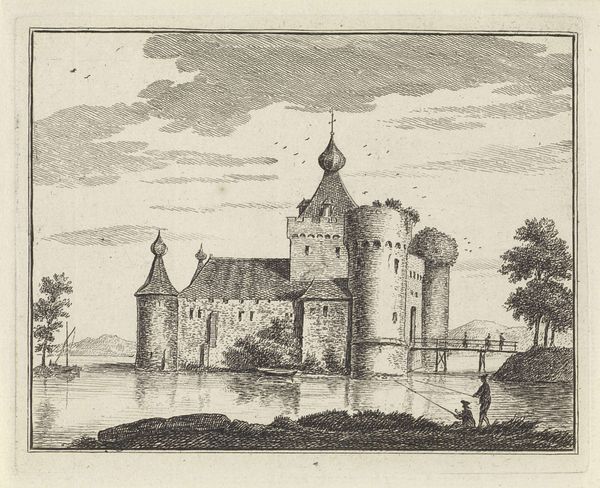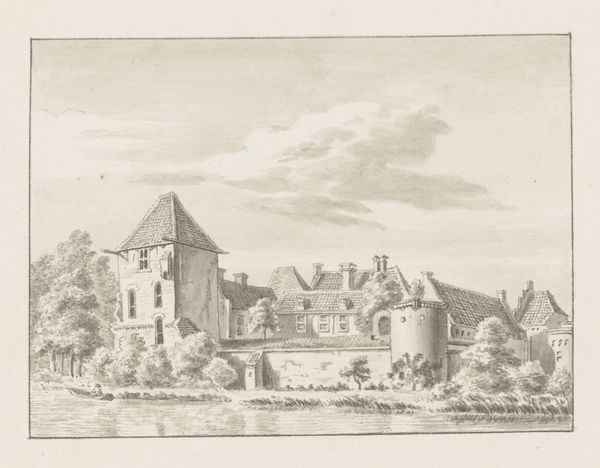
drawing, pencil
#
drawing
#
dutch-golden-age
#
landscape
#
pencil
#
cityscape
#
realism
Dimensions: height 157 mm, width 244 mm
Copyright: Rijks Museum: Open Domain
Editor: This is Roelant Roghman's pencil drawing, "View of Abcoude, Seen from the North," dating from around 1646 to 1647. It’s currently housed in the Rijksmuseum. I'm struck by how still and quiet the composition feels. It's a very muted, almost dreamlike cityscape. How do you interpret this work? Curator: It's fascinating to consider this image through the lens of Dutch identity formation during the Golden Age. Roghman’s focus on the landscape, incorporating both natural elements and the built environment, subtly highlights notions of land ownership and national pride. How do we unpack the implicit power dynamics embedded in this seemingly pastoral scene? Think about the structures included - these buildings and townscapes could signify the rising merchant class, who were beginning to challenge traditional aristocratic power. The act of meticulously rendering the landscape becomes an act of claiming and defining territory, wouldn’t you agree? Editor: I do. I hadn’t considered it in terms of national identity, more of a straightforward record of a place. It is interesting to think about how including these structures asserts some form of claim over the area. What kind of a dialogue do you think this drawing opens up regarding our current understanding of history and territory? Curator: It challenges the romanticism often associated with landscapes, doesn't it? This approach allows us to interrogate how landscapes aren’t just passive backdrops but are active participants in shaping political and social realities. The drawing makes me think of whose stories get centered and whose are marginalized when representing a particular place or nation. It requires us to consider the voices and experiences that may be erased or overlooked in dominant narratives. Editor: That's definitely something to consider further, I never looked at landscapes that way! Thanks, I will have to research more on Dutch identity. Curator: And that’s where art becomes a conduit for critical reflection.
Comments
No comments
Be the first to comment and join the conversation on the ultimate creative platform.
